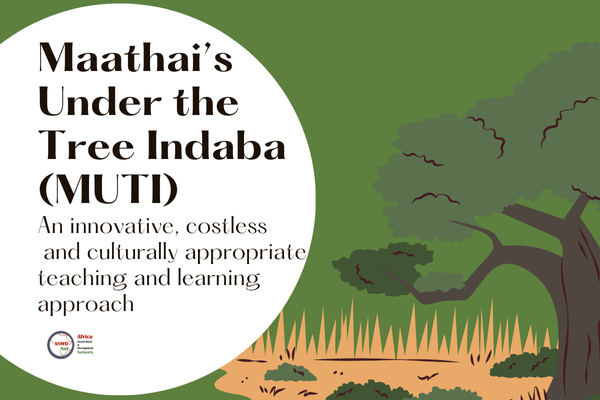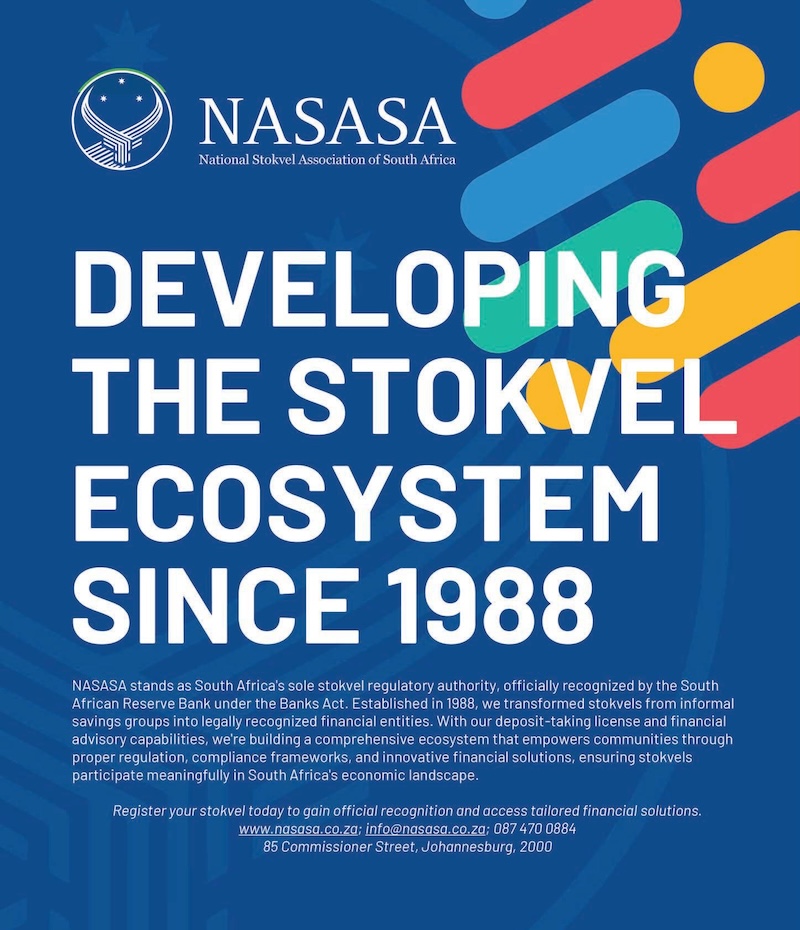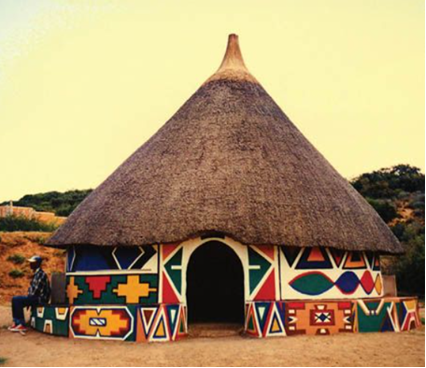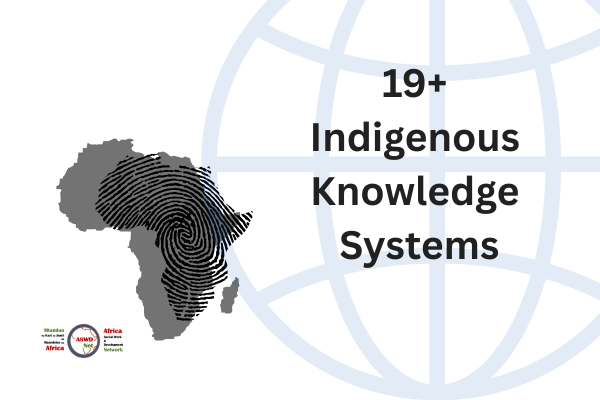
Maathai’s Under the Tree Indaba (MUTI) teaching and learning approach
- The steps and strategies for a MUTI pedagogy
- Extension of MUTI model
- Information about Wangari Maathai.
Wangarĩ Muta Maathai (1940-2011) from Kenya formed the Green Belt Movement (GBM) in 1977 to champion planting of trees, environmental conservation, and women’s rights. The Maathai’s Under the Tree Indaba (MUTI) approach, is a model of instruction that uses Maathai principles. Muti, mi, mthi or muthi means tree in African languages (Swahili, Shona, Zulu, Xhosa etc). The model can be used by instructors, trainers, facilitators or teachers at any level of education for a variety of topics, including about the environment, livelihoods, natural resources, ecosystems, Afrofuturism, culture, advocacy, decolonisation, development, indigenisation, Ubuntu, gender, land rights, the Green Belt Movement, African Union Maathai Environment Day, Tree of Life approach and many others. The major objective of MUTI is to simulate the work of Wangari Maathai, an environment champion and inspiration behind Africa Environment Day (African Union), observed on 3 March each year. The other objectives are to allow students to practically engage with the environment in their learning, to learn collaboratively and offer an opportunity to learn from the past (sankofa) and reimagine the future (renaissance and Afrofuturism).
The steps and strategies for a MUTI pedagogy
- Plan to have teaching and learning outside classrooms, under a tree/s.
- Choose an indigenous tree to value a pan-African identity.
- Have an equal number of females and males to value gender and development.
- Focus on kwimenya, that is self-knowledge instead of instructing.
- Learners should engage in actions such as tree watering, planting, weeding, mulching, manuring or protecting.
- Move around seeing all the trees that had students under them (if you had more than one tree).
- Gather at one place and celebrate with trees in the languages they hear, attires they see, symbols they know, festivals they are familiar with, traditions they live – drumming, dancing, singing or performing.
- Do an imbizo, dare or indaba under the tree to discuss a selected issue.
- Give students an assessment/assignment, some options are:
- Take or select one picture from the event and reflect on what it means to you and lessons.
- Take or select one picture from the event and reflect on what it means to you and lessons.
- Identify a problem arising from the state of the environment you visited and answer the question What would Maathai have done?
- Recreate the environment that you visited to reflect the ideas of Afrofuturistic one.
- Repeat the visit on your own and write an essay about the differences between the two visits.
- Plan a visit for another group, taking this Maathai statement in mind ‘Of course, no one culture is applicable to all human beings who wish to retain their self-respect and dignity; none can satisfy all communities. Humanity needs to find beauty in its diversity of cultures and accept that there will be many languages, religions, attires, dances, songs, symbols, festivals and traditions. This diversity should be seen as a universal heritage of humankind……Cultural liberation will only come when the minds of the people are set free, and they can protect themselves from colonialism of the mind. Only that type of freedom will allow them to reclaim their identity, self-respect and destiny. Only when communities recapture the positive aspects of their culture will people relearn how to love themselves and what is theirs. Only then will they really appreciate their country and the need to protect its natural beauty and wealth. And only then will they understand the future and of generations to come.’
- Debate between the different groups, one side affirming and the other opposing.
- Present on the Green Belt Movement or Maathai Day.
- Write a song, story or poem.
- Create a training program, a prevention strategy or a draft policy.
- Do a needs assessment and create a report.
- Create a community development plan, a decolonisation plan or an indigenisation plan.
- Collect community stories or experiences.
- Create a web page, blogpost, digital portfolio, podcast or social media post (text, video or audio) about the MUTI.
- Curate and exhibit photos and artefacts from the MUTI.
- Create a model forest or environment using clay etc.
Extension of MUTI model
The MUTI pedagogical model can be extended as follows:
- Groups from different schools, colleges and universities meet at one place for their MUTI festival.
- At one institution, groups from different departments, disciplines, subjects and age groups meet at one place for their MUTI festival.
- The indaba, dare or imbizo can be a simulation of the African Union meeting on the environment, delegates representing the countries of the Union.
- Groups from different communities, districts, counties, countries or regions meet at one place for their MUTI festival.
- Involve the African Union, regional body e.g. ECOWAS, governments and local authorities, and non-government organisations, where appropriate.
- Offer incentives, prices or honorarium.
Information about Wangari Maathai.
Use the form below to subscibe to Owia Bulletin.
Discover more from Africa Social Work & Development Network | Mtandao waKazi zaJamii naMaendeleo waAfrika
Subscribe to get the latest posts sent to your email.



